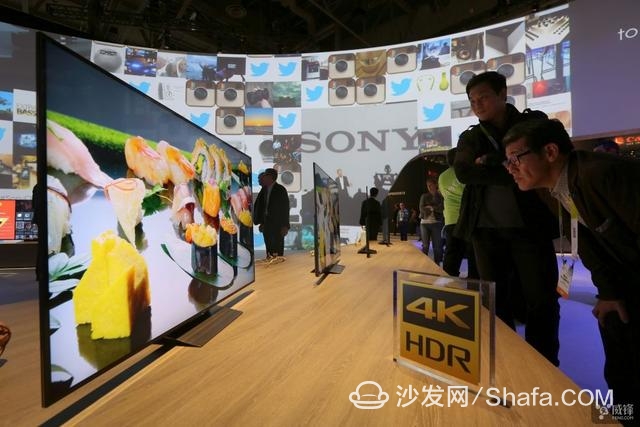
Legendary HDR

As we have described in many talks, HDR's Chinese name is called "high dynamic range." It was first known in the field of photography. With the rise of the concept of 4K, the concept of HDR gradually appeared in the TV market. Until now, it has become the standard property of 4K TV.
To be simple, HDR technology allows directors and filmmakers (who also generally work with wide color gamut standards) to reveal more details about the bright and dark parts of an image and to present a wider range of colors. If 4K only improves the resolution of the image, allowing you to feel more clear and detailed when watching TV (you may even feel a slight increase in the normal viewing distance), then HDR brings an eye change. . No wonder people say that HDR is the most important improvement in the 4K era.
It is worth noting that although the changes brought about by HDR are controlled by content producers, they are built into the content, so this is not a change in the visual effects imposed by television. In addition, HDR used in photographs is often a kind of "simulation", but HDR on TV is really showing a wider dynamic range. In simple terms, it will definitely give you a considerable change in perception.
The problem is that the concept of TV HDR has basically emerged with the rise of 4K, and the Ultra HD Alliance has made HDR one of the standard 4K TV standards when it comes to 4K standards. So, in order to enjoy the new experience brought about by HDR, do we have to buy a 4K TV? After all, thinking about the popularity of 4K content for a long time, in order to save money, many people are thinking about 1080p.
The answer is a bit small and delicate

What does that mean? According to the standards set by the Ultra High Definition Alliance, only HDTV-capable 4K TVs can be regarded as "Ultra-definition 4K TVs" that have passed the qualifying line. Nowadays, major manufacturers are focusing on 4K TV, and the concept of HDR is indeed very hot now, so for most of the situations you can now go to the market, the answer can be affirmative - think To enjoy HDR content, you really need to buy a 4K TV.
But to answer this question on a technical level, it is a bit complicated. The first thing to note is that there is no relationship between HDR and resolution. In a sense, 4K resolution is related to the number of pixels on your TV screen - that is, each point that makes up a TV image - while HDR and wide color gamut affect the brightness of each pixel. color.
Even if it's not quite accurate, you can still understand that they are the "quality" of the pixels, not the quantity. This is why some people mention HDR when they say: "Don't want more pixels, better pixels." So even though all TVs with HDR and wide color gamut are 4K TVs, because these are technically these concepts Is independent of each other, non-4K HDR TV is not impossible.
Interestingly, the separation of 4K resolution and HDR is not just on paper, and content providers such as Netflix can provide non-4K HDR content—but it does require some coincidence. If you try to watch this kind of HDR video, generally the video quality starts with a lower resolution and then climbs to 4K resolution. This process is full HDR, it does not start after 4K. If your network speed is very poor, even if you can only maintain a very low resolution, the content is still HDR!
Re-emphasize this conclusion: If someone wants to get non 4K HDR content, this is entirely feasible.
Unfortunately, theory is only theory

Unfortunately, the answer is no. The first thing is technical: HDR and wide color gamut are integrated into the content. More details and colors determine the amount of information to be transmitted. Because of the higher resolution than in the past, 4K TVs, of course, need to transmit more information than in the past. This means that they have room to handle more loads such as HDR. Will TV manufacturers innovate technology for low-end 1080p TVs, especially at this point in time when 4K is about to become mainstream? It is impossible to think.
Also, the entire television industry is now striding toward standardization in 4K, and the pace has gone faster than ever before. There will be more and more 4K content in the future, and UHDTV will become cheaper and cheaper. The low-end 1080p market soon won't squeeze any more oil.
Another point worth emphasizing is that HDR is not a panacea. If a TV is not using an OLED panel, there is no regional dimming, and those technologies that can display a wide color gamut, there is little difference in perception between HDR content and non-HDR content. Recently, some manufacturers are advocating the so-called "HDR compatibility" owned by 1080p TVs. However, compatibility is one thing, and the ability to truly show results is another matter, so this is a misleading propaganda. If there are special effects to pretend to open HDR, it would be even worse.
Therefore, although the inexpensive 1080p HDR TV sounds very good and theoretically completely feasible, it is basically impossible to happen in the current market environment. Fortunately, from the TV new product line released by major manufacturers this year, 4K and HDR have basically been extended to the mid-range areas. Like LG can even guarantee that the lowest level of the mid-range TV can be almost the same quality as the flagship. Therefore, we do not need to worry too much about these things and boldly try the golden combination of 4K and HDR. Otherwise, it would be nice to wait.
Smart TV/box information can focus on smart TV information network sofa butler (http://), China's influential TV box and smart TV website, providing information, communication, TV boxes, smart TVs, smart TV software, etc. Answering questions.